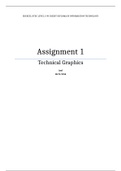Master Business Economics 2018-2019, KU Leuven
Prof. Maximiliano Udenio
1
, Inhoudsopgave
Concepts & Frameworks....................................................................................................................4
Framework.........................................................................................................................................4
Tailor operations.................................................................................................................................4
Competition, Competencies and Operations.....................................................................................5
Cost advantage analytics....................................................................................................................5
Analysing competitive threat..............................................................................................................5
Efficient frontier estimation: Data Envelopment Analysis..................................................................6
Introduction........................................................................................................................................6
DEA concepts......................................................................................................................................6
CCR-model, constant returns to scale.................................................................................................6
BBC-model, variable returns to scale..................................................................................................7
CCR & BBC...........................................................................................................................................7
Non-discretionary variables................................................................................................................7
Conclusion..........................................................................................................................................7
Capacity sizing and investment.........................................................................................................9
Capacity portfolio strategy.................................................................................................................9
Capacity size and capacity costs......................................................................................................9
Capacity size and capacity value......................................................................................................9
Optimal capacity sizing....................................................................................................................9
Trade off: capacity-inventory-waiting time.........................................................................................9
Trading off capacity with inventory...............................................................................................10
Trading off capacity with waiting..................................................................................................10
Capacity timing and expansion........................................................................................................11
Capacity timing strategies................................................................................................................11
Main drivers behind capacity decisions............................................................................................11
Option value of waiting: decision trees.............................................................................................11
Capacity timing and adjustment: reduce capacity frictions..............................................................11
Product and process flexibility.........................................................................................................12
Introduction......................................................................................................................................12
Product design for flexibility.............................................................................................................12
Process design for flexibility..............................................................................................................12
Chaining.........................................................................................................................................12
Allocation flexibility.......................................................................................................................12
Mass customization..........................................................................................................................13
Risk management and operational hedging.....................................................................................13
Improvement and innovation..........................................................................................................14
Operations strategy drivers..............................................................................................................14
Continuous improvement.................................................................................................................14
Radical improvement (innovation)...................................................................................................14
High unforeseeable uncertainty (unk unks)..................................................................................14
Encroachment...............................................................................................................................14
Operations view of diffusion.........................................................................................................14
Marketing view of diffusion...........................................................................................................15
Demand and revenue management................................................................................................15
Introduction......................................................................................................................................15
Price controls....................................................................................................................................16
Price differentiation.......................................................................................................................16
2
, Dynamic pricing.............................................................................................................................16
When to do price controls.............................................................................................................16
Capacity controls: yield management...............................................................................................16
Overbooking..................................................................................................................................16
Capacity allocation (linked to customer segmentation)................................................................17
Extra readings and cases..................................................................................................................18
Swiss watch industry.........................................................................................................................19
A note on the Bass Diffusion model..................................................................................................21
UM.................................................................................................................................................21
AP..................................................................................................................................................21
Bass Diffusion model to make predictions....................................................................................21
Remarks.........................................................................................................................................21
Who’s using it to forecast product acceptance.............................................................................21
Disruptive technologies: catching the wave......................................................................................22
Spot and cultivate disruptive technologies....................................................................................23
Innovation and unforeseeable uncertainty.......................................................................................25
Using a tailored combination of planning, learning and selectionism...........................................26
Reduce complexity if selectionism and learning are too expensive..............................................26
Platform sharing...............................................................................................................................26
Different technologies of platform sharing...................................................................................27
Platform sharing and capacity sizing.............................................................................................27
Automotive industry......................................................................................................................27
Risks and benefits of platform sharing..........................................................................................28
Principles on the benefits of manufacturing process flexibility.........................................................29
Conclusion flexibility principles.....................................................................................................29
Flexibility principles.......................................................................................................................30
Revenue management......................................................................................................................31
Seagate – Quantum case..................................................................................................................32
Model to help understand how new products encroach on old markets......................................32
Strategy under uncertainty...............................................................................................................33
4 levels of uncertainty...................................................................................................................33
3 strategic postures.......................................................................................................................34
Portfolio of actions........................................................................................................................35
3
, Concepts & Frameworks
Framework
Operations strategy
Net present value
Competitive strategy
Customer value proposition
Price, responsiveness, quality, variety
Principle of alignment
Competitive strategy and operations strategy should be aligned
! Environment not static
Top-down (market perspective)
Bottom-up (resource perspective)
Resources
Capacity portfolio, real assets
Tangible/ intangible
Size, timing, type, location
Processes
Activity network
How resources work and are used to add value
Supply, technology, innovation, demand
Competencies
Good competencies are needed to make sure the resources and processes create value
Competencies naturally connect to competitive strategy
Cost, time, quality, flexibility/ variety
Value = C * (R+P)
Tailor operations
Fit the operational strategy to the competitive strategy
Strategic operational audit
Gap analysis to assess degree of alignment/ strategic fit and to develop improvement actions
Value proposition, competencies, resources and processes
Balanced scorecard map
Growth strategy must define desired balancing point between emphasizing productivity or
revenue growth
4 perspectives of performance
Market view, internal operations view, learning and growth view, financial view
Open eyes to obvious misalignments
Product-process map
Variety (product) vs flexibility (process)
Job shop/ flow shop, standardized products/ customer solutions
Tailored operations are within the zone of alignment
4
, Competition, Competencies and Operations
Cost advantage analytics
Trade-offs
Cost vs non-cost
Downward sloping lines
Customer trade-off
Demand side: market segmentation possible because of different trade-off curves
Iso-utility surfaces (product attributes)
Higher utility move north-east
Flat curve: relatively insensitive to cost
Operational trade-off
Supply side: prioritization of competencies
Iso-NPV curves (competencies)
Operational trade-off curve
Choose location on curve that makes you out of reach for your competitors
You can move along the line with some easy changes in production process, but if you want
to go to another iso-NPV curve you need some investment
Efficient frontier
o Operational efficiency
Higher quality, higher flexibility at lower cost
o Efficient cost
o Will shift as time evolves
o Formed by the market, not by 1 firm
Focused operation
Consistent operating point on its trade-off curve
Product mix that requires similar competencies
Higher probability to be on the frontier
How to focus
1. Partition products and services
2. Separate resources and processes
3. Retain focus over time
! In real life
Growth, EOS & risk-averse
Analysing competitive threat
Analyse what our rival’s cost would be if it were to compete with us head-on
! Difficult to obtain information
1. Correct costs for yourself and rival
Planned cost differential
Sourcing effects/ utilization effects
2. Adjust for differences in strategy
Strategic cost differential
Non-cost competency, firm has changed its value proposition
Operational efficiency cost differential
The larger this is, the larger the competitive threat of the rival (that he will enter our market segment)
Depends on slope of rival’s trade-off curve
! Tool to estimate, outcome depends on assumptions made
Coe < 0: if rival goes custom, it would have to adapt new processes to make up for OE disadvantage
Coe > 0: rival can attack custom segment with its processes
5


